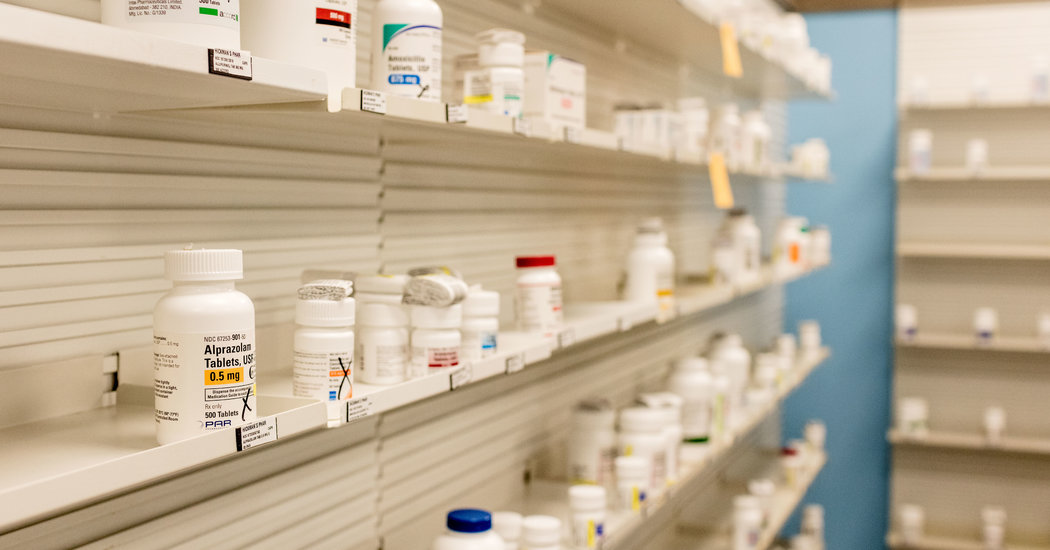
Lynne Calloway had been taking a newly refilled arthritis prescription for a few days when she mentioned she wasn’t feeling well.
So her husband, Joseph Calloway, did some investigating. When he looked up her medication in a book detailing prescription drugs, he said, he discovered that she had been given the wrong one.
A CVS in New Jersey had mistakenly dispensed a chemotherapy drug, he said, that could be used to treat arthritis, but only when taken at limited frequencies — commonly a single dose a week. Mrs. Calloway had been taking her medication twice a day.
Pharmacy errors come in various forms, and many pharmacists at retail chains across the country are increasingly worried about making mistakes, an investigation by The New York Times found.
[Read The Times’s investigation.]
They say they are juggling too many tasks without enough help. One pharmacist acknowledged making 10 to 12 errors a year — “that are caught” — in an anonymous letter to the South Carolina Board of Pharmacy.
While patients cannot control what happens behind the pharmacy counter, they can be on the lookout for errors. These simple steps can help.
Talk to the pharmacist
Yes, they may look busy, and probably are, but pharmacists are the best source of information about the drugs they dispense. Ask to speak with a pharmacist, especially when the prescription involves a medication that is new to you. Inquire about side effects and whether the new drug is safe in combination with any others you are already taking.
Pharmacists are supposed to check for drug interactions when dispensing prescriptions, and have computerized alerts to help, but they can get distracted.
Just by asking questions, a patient increases the odds that the pharmacist will take a second look at the prescription — and catch any errors. The Institute for Safe Medication Practices suggests asking the pharmacist at least one question, such as, “Is there anything special I should know about taking this medicine?”
Open the bag
One of the most common mistakes made in pharmacies is dispensing a prescription to the wrong patient, according to the institute, a nonprofit dedicated to preventing medication errors.
The correct name of the patient should be on the bag (usually on a printout stapled to the outside) as well as on the box or bottle inside it that contains the medication. It is important to check both; sometimes the bag is right, but the medication is not.
Also check the address and birth date, in case someone with a similar name had a prescription waiting as well.
Look at the pills
Patients who get refills of the same medications month after month are more likely to recognize a pill that looks different, yet they might assume that the pharmacy has switched to a different generic or a new supplier. Make no such assumption.
Start by reading the bottle. Many include a description of the pills. If the bottle says “round yellow pills” and it is filled with oval blue ones, something is amiss.
But sometimes the differences are subtler. Fortunately, the internet is filled with websites that can help. WebMD has a search engine to help identify pills, as do AARP, Medscape, Drugs.com and the National Library of Medicine.
Read the instructions
Most drugs come with an informational leaflet. Take a look to make sure the medication matches the ailment being treated.
Report errors
Alert the pharmacy as soon as possible when there is a mistake. Not only should the wrong medication be exchanged for the correct one, but another patient might be at risk if prescriptions were accidentally mixed up. The prescribing doctor should also be alerted, according to Allison Hanson, a pharmacist at the Institute for Safe Medication Practices. A mistake could have started with the doctor, so he or she should be informed, and ingesting the wrong drug may require medical attention.
Letting pharmacies know about errors can help them prevent others in the future. All the major pharmacy chains told The Times that patient safety was their top concern. The National Association of Chain Drug Stores, a trade group, said that “pharmacies consider even one prescription error to be one too many” and “seek continuous improvement.”
Errors can also be reported to state pharmacy boards. In addition, the safe medication group collects reports of medication errors and analyzes them for trends. It shares the information with the Food and Drug Administration, which can investigate further or pursue regulatory action.

